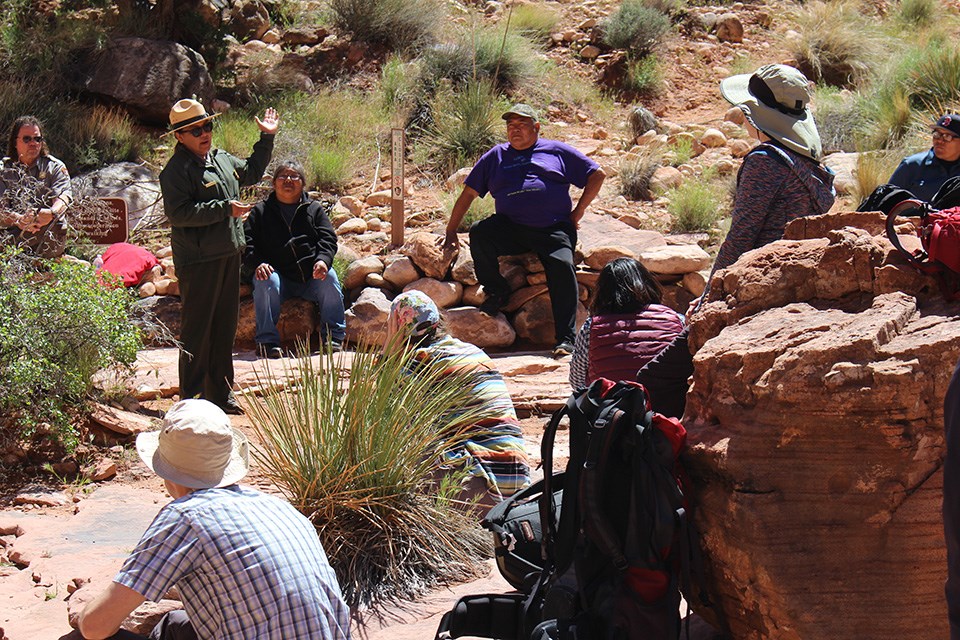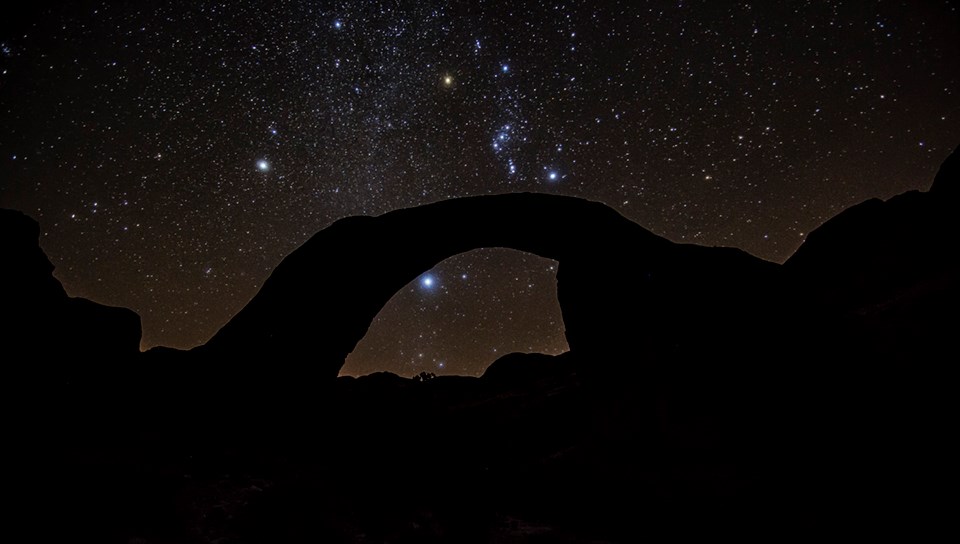Last updated: April 9, 2021
Article
Rainbow Bridge: a Traditional Cultural Property

NPS
In 2017 The National Park Service designated Rainbow Bridge a Traditional Cultural Property, recognizing the site's historic and ongoing cultural significance to at least six American Indian tribes, and establishing its listing in the National Register of Historic Places. Rainbow Bridge is the first site in Utah to gain a TCP designation.
“Anyone who has visited Rainbow Bridge can attest to its stunning beauty and unique value as an example of the geologic forces that have shaped this region for millions of years,” said William Shott, superintendent of Glen Canyon National Recreation Area and Rainbow Bridge National Monument. "Designation as a Traditional Cultural Property goes a step deeper, reflecting how meaningful Rainbow Bridge is to this region’s inhabitants. For centuries, if not millennia, it has inspired origin stories, ceremonial rites and pilgrimages for multiple tribes, and its focus as a site of vital meaning and cultural identity continues to this day.”
Listing in the National Register of Historic Places protects sites like Rainbow Bridge by requiring a consultation with associated traditional communities and a rigorous review process before initiation of any federal project that could affect the property.
Since before recorded history, the 290-foot-tall, sandstone Rainbow Bridge has been associated with traditions of the Hopi, Kaibab Paiute, Navajo, San Juan Southern Paiute, Ute Mountain Ute, and Zuni people. Archeological finds near the bridge include a hearth estimated to be 1,500 years old.
Spanning 275 feet, with thickness varying from 33 to 42 feet, Rainbow Bridge was formed by the erosional forces of Bridge Creek, which carries water off the north side of Navajo Mountain. The bridge is one of the largest known stone arches in the world.
The Rainbow Bridge TCP comprises 85 acres fully contained within the 160-acre Rainbow Bridge National Monument, which President William Howard Taft established in 1910 to protect the arch as a “wonder of nature.” Rainbow Bridge drew more than 86,000 visitors last year, most of whom traveled by boat over Glen Canyon National Recreation Area’s Lake Powell to a trailhead about 1.25 miles from the arch.
“Designation of Rainbow Bridge as a Traditional Cultural Property will help preserve this unique cultural landmark for visitors from all walks of life for centuries to come,” Shott said.

NPS / Brent&Dawn Davis
As a Traditional Cultural Property, the International Dark-Sky Association (IDA) was excited to designate Rainbow Bridge National Monument as an International Dark Sky Sanctuary. This designation was the first of its kind in the National Park Service and distinguishes Rainbow Bridge National Monument for the quality of its naturally dark night skies and the site’s cultural heritage.
“This designation is an important step to ensure we protect the entirety of the landscape at Rainbow Bridge National Monument, which is sacred to many of the Native American Tribes in the area,” said William Shott, Superintendent of Rainbow Bridge National Monument and Glen Canyon National Recreation Area. “We’re thrilled to be the first National Park Service unit to receive this specific designation, as this will only fuel our night sky preservation efforts.”
“We are pleased to honor and respect the status of Rainbow Bridge as the first Traditional Cultural Property accredited through the IDA International Dark Sky Places Program,” said International Dark-Sky Association Executive Director J. Scott Feierabend. “In the span of this remarkable natural bridge, we see symbolically represented the arch of the Milky Way across the night sky, a reminder of the long-held value of both Rainbow Bridge and the natural night sky to native peoples of the area.”
